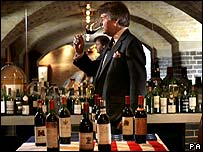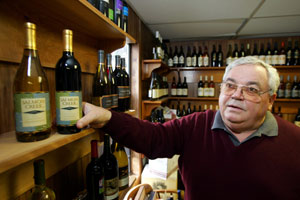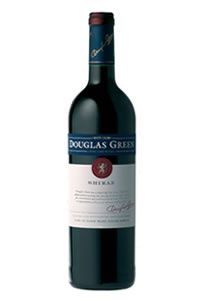
Thirty years on, California wines trounced Bordeaux wines in a rematch of a historic blind taste test credited with, in the words of one writer, reshaping the world of enology.
The original test was held in Paris. This time around, the Californias had the homecourt advantage in the competition held at COPIA: Center for Wine, Food and the Arts, in Napa, CA.
Napa Valley wines were judged best by the combined scores of two simultaneous panels, one in California and one in London. Judges at both venues gave top honors to a 1971 Ridge Monte Bello cabernet from the Santa Cruz Mountains.
"Maybe it is final justification that it held through all these years and did well," Paul Draper, Monte Bello's winemaker, said to the Associated Press. "I'm truly delighted. Ten years from now, all of us and all the wines will truly be faded and maybe we can lay this to rest."
The highest-ranked Bordeaux was a 1970 Chateau Mouton Rothschild, which placed sixth of 10 wines tasted in the anniversary recreation of the historic "Judgment of Paris." Bordeaux wines took sixth through ninth places Wednesday, with a 1969 Cabernet from Freemark Abbey finishing last.
The rematch of wines from the "Judgment of Paris," billed as the most famous wine tasting in history, was held simultaneously in the heart of California's premier wine country and at Britain's oldest wine and spirits merchant.
"It's just beautiful," said Christian Vanneque, who was a judge at the '76 Paris tasting and again Wednesday in Napa. "It shows that these California wines did win also the test of time."
Said Vanneque, who lives in Indonesia, to Agence France Presse. "I don't know if I will be able to go back to France. After a second time, they will kill me."
Ten judges sampled 10 unlabeled glasses of decades-old premium wines. Two of Vanneque's favorite blind wine picks were from Napa Valley.
"The one I thought was a Mouton was Clos du Val," he said. "The most surprising thing is they were all exceptional. I did not expect to have that much harmony among them all."
"There wasn't one wine that stood head and shoulders above the others," said taster Jean-Michel Valette, a master of wine at Robert Mondavi Winery in Napa. "These are all world class."
The May 24, 1976, tasting is considered a milestone in the American wine industry because it shattered the perception that the New World was capable only of producing cheap bulk wines. It was put together by Steven Spurrier, an English wine merchant who owned a shop and wine school in Paris. Spurrier, now a wine consultant, also was co-organizer of Wednesday's rematch.
The organizers noted that the judges re-evaluated the original reds, then tasted the modern reds and whites from both countries. For the most part, the judges were unable to distinguish the French and California wines.
Top French white was a Puligny-Montrachet Premier Cru des Pucelles 2002 Domaine Leflaive; for California it was a Talley Rosemary's Vineyard 2002. Top French red was a Chateau Margaux 2000 and the leading California red was a Ridge Monte Bello 2000 with 77 points.
To Dowd's Spirits Notebook latest entry.
To Dowd's Wine Notebook latest entry.
To Dowd's Brews Notebook latest entry.
Back to Dowd's Bar Blog




